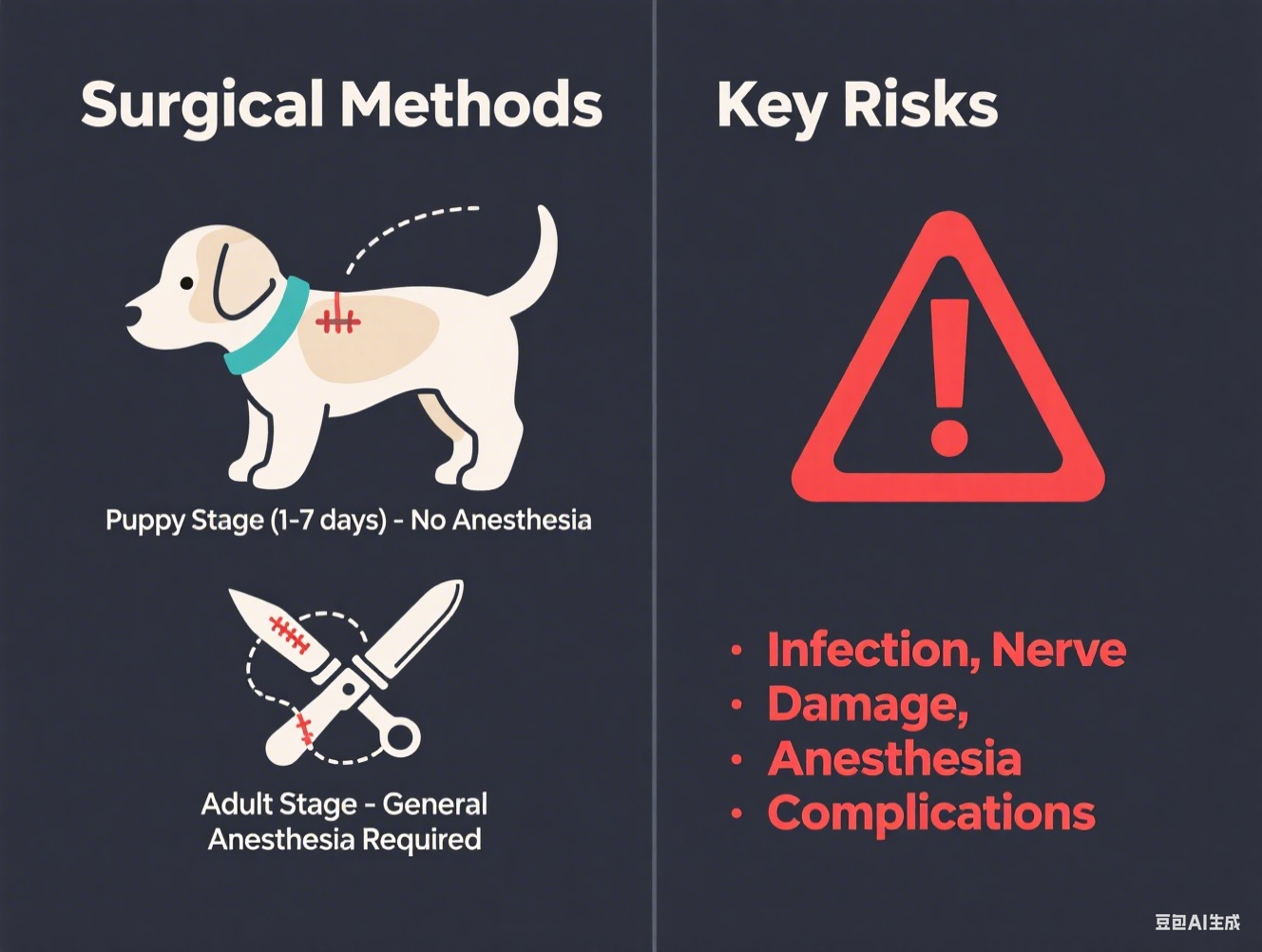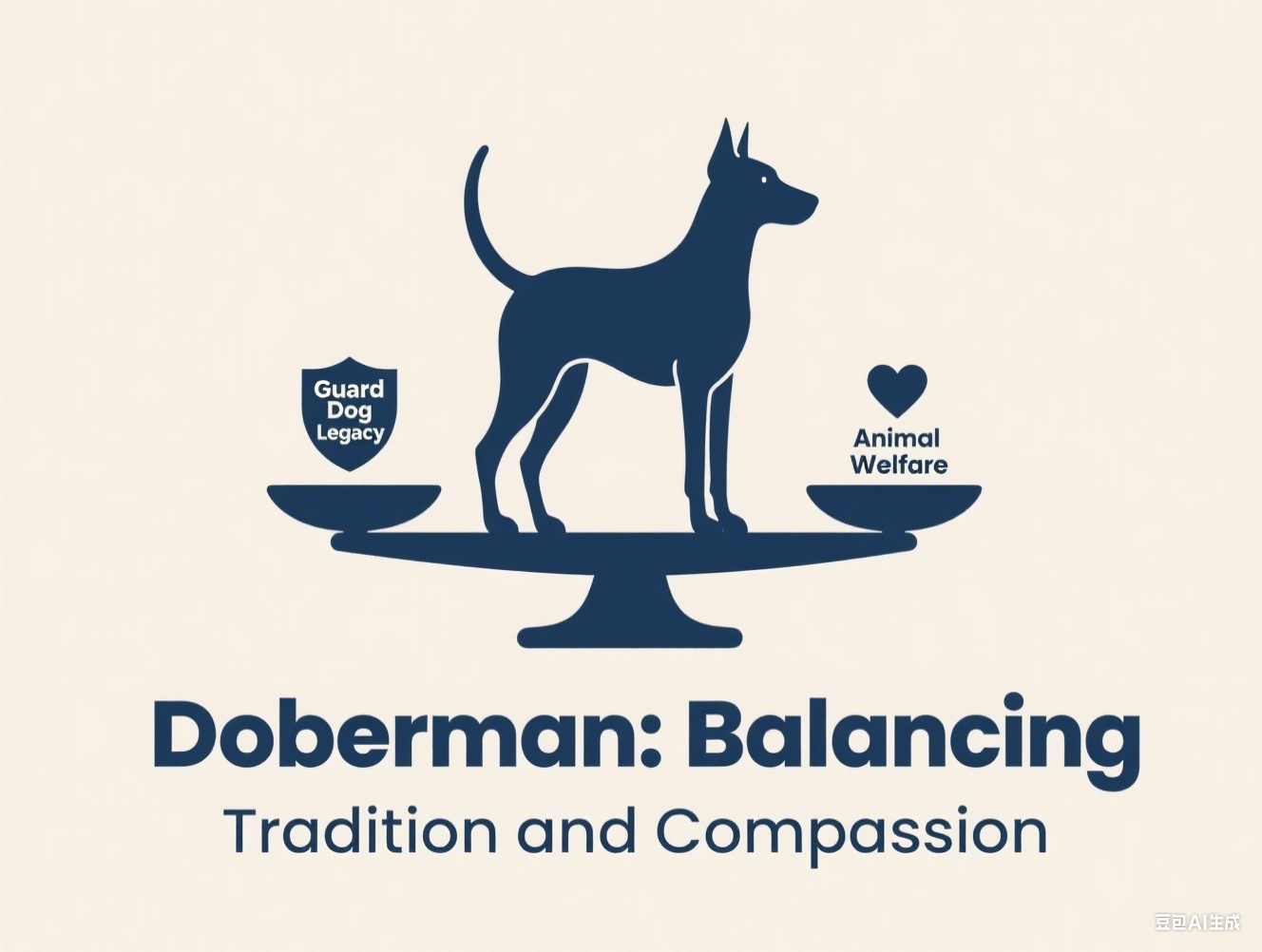In the field of pet grooming, "tail docking" has always been a highly controversial topic. Some people believe it is a "standard feature" for specific dog breeds, enhancing their aesthetic appeal; others argue that it violates animal welfare and constitutes unnecessary trauma. Today, we will delve into the ins and outs of dog tail docking surgery and uncover the truth behind this traditional practice.

I. The Evolution of Tail Docking: From Practicality to Aesthetics
The origin of tail docking was not for "aesthetics" but out of practical needs. In ancient times, tail docking for working dogs was a matter of survival:
- Docking the tails of hunting dogs prevented them from getting caught on branches in bushes, reducing the risk of injury;
- Docking the tails of herding dogs protected them from being trampled by livestock;
- Docking the tails of guard dogs was thought to weaken their "signals of submission" (dogs tuck their tails when frightened), making them more intimidating.
As times have changed, working dogs have gradually transformed into companion animals. While the practical value of tail docking has diminished, it has been preserved for "meeting breed standards." For example, the American Kennel Club (AKC) has clear regulations on the tail docking morphology of breeds like Corgis and Dobermans, gradually linking tail docking to "purebred dog aesthetics."
II. Which Dog Breeds Are Often Subject to Tail Docking? Each Has Its Reasons
When it comes to tail docking, many people first think of these breeds, but their reasons for docking vary significantly:
- Corgi: In earlier years, as cattle herding dogs, Corgis had their tails docked to avoid being kicked by cattle hooves; today, the aesthetic of "a tailless, rounder buttock" has persisted.
- Doberman, Rottweiler: As guard dogs, tail docking is believed to reduce emotional expression, aligning with the breed standard of "being capable and fierce."
- Poodle: Originally bred as water retrievers, their tails were docked to reduce resistance while swimming; now, it is more often to complement grooming styles like the "Teddy cut."
- Schnauzer: Once used for ratting, tail docking prevented them from being bitten by rats, and now it has become a "signature feature."

III. How Is Tail Docking Performed? Timing and Care Are Crucial
The core of tail docking is surgically removing a portion of a dog's tail, with specific methods adjusted based on the dog's age and size:
1. Timing of Surgery
- Puppy stage (1-7 days): At this point, the tail nerves are not fully developed, and wounds heal quickly. Anesthesia is usually unnecessary. A sterilized rubber band is used to tighten the area where the tail needs to be docked, blocking blood circulation. The tail falls off naturally after a few days.
- Adult stage: General anesthesia is required, and the tail is directly amputated through surgery. Suturing is needed after the operation to stop bleeding. However, adult dogs experience significant pain at this stage, with a longer recovery period (approximately 2-3 weeks).

2. Surgical Risks
Tail docking carries risks for both puppies and adult dogs:
- Puppies may develop tail infections or have abnormally shortened tails due to improper tightening of the rubber band;
- Adult dogs face higher anesthesia risks, and postoperative complications such as bleeding, nerve damage, or even lifelong tail numbness may occur.
3. Key Postoperative Care Points
- Keep the wound dry and prevent the dog from licking or biting it (an Elizabethan collar can be worn);
- Regularly disinfect with iodine and monitor for signs of infection such as redness, swelling, or pus;
- Puppies need to be kept warm, while adult dogs should have restricted vigorous exercise to prevent wound splitting.

IV. A Rational View of Tail Docking: Let Dogs Speak for Themselves
As pet owners, we need to consider: Is tail docking a dog's need or a human obsession?
- Prioritize medical necessity: If a dog requires tail docking due to conditions like tail fractures or tumors, it is a reasonable treatment;
- Reject "docking for beauty": If the surgery is performed merely to "meet standards" or "look more spirited," it essentially imposes human aesthetics on animals;
- Pay attention to individual differences: The tail morphology within the same breed is already diverse, and health and comfort are far more important than standardization.





